Posted by Managementguru in Accounting, Financial Accounting, Financial Management, Principles of Management
on Mar 27th, 2014 | 0 comments
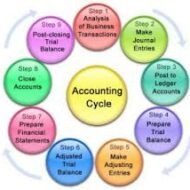
An Analysis to Understand the Art of Accounting Objectives of an Accountant: The pure objective of an accountant would be to record all business transactions that are monetary in nature, in order to ascertain if the company has earned profit or suffered loss during a financial year. The financial position of the company as on a particular date can thus be understood from the accounting journals and ledgers. We are talking about the conventional purpose of accounting. But with the lapse of time, more and more is being expected from accounting, in that, it has to meet the demands and requirements of tax authorities for the purpose of income tax and sales tax returns, government regulations, investors, owners and the management. Thus it can be aptly defined as the art of recording, classifying and summarizing events in a significant manner, that involve money transactions and/ or events that are of financial character, for interpretation. Systematic records for future reference: Book keeping is an accounting practice that tells us how to keep a record of financial transactions. A firm deals with its customers and suppliers, where numerous business transactions take place every day. It is not possible for us to remember every transaction, which we might need it for our reference at a future date. Especially, if it happens to be a credit sale, definitely the necessity of systematic book keeping arises. The owner would like to know, what amount is due from whom, from time to time. To know the financial position of the firm: Every merchant is in business to earn profits. So systematic recording of factual and financial information will facilitate the owner to understand where he stands financially at the end of a financial year, what is his net profit and to pull the ropes tight if credit margin is wide. Further more, he can also understand the nature of his business growth by comparing the accounting records of two consecutive years. Taxation purposes: Some people evade tax, but no one can avoid tax. The main source of revenue generation for government is tax payments from business merchants and corporate companies. You need to pay a percentage as tax, in accordance with profit arising from sales. The accounting records that you maintain contain facts that are taken into account by the taxation authorities as a basis for assessment. https://amzn.to/2sl5aL7 Good evidence in the court of law: To prove your genuinity, in case of some disputes between yourself and the customer or supplier, your records and vouchers, if authentic and valid, are going to speak for you in the court of law as solid evidence. Accounting also answers some of these questions: How well the different departments of business have performed all along? What is the most profitable product line? What are the products whose production has to be increase and what is to be stopped in order to avoid losses? Is the cost of production reasonable or excessive? Is there a need to revise policy decisions to improve the profitability? What will be the future plans of business in the wake of existing results presented to the management? Overall, is the firm proceeding towards the right direction in terms of productivity, profitability and growth? Accounting is not only about recording and classifying, the interesting features being analysis and interpretation, which are the key factors for the development of the organization as a whole. Note: The Comptroller and Auditor General of India (CAG),is the head of the Supreme Audit Institution of India (SAI) CAG is the sole auditor of the accounts of the Central (Union) Government and the State Governments. CAG is also responsible for the audit...

Posted by Managementguru in Business Management, Human Resource, Organisational behaviour, Principles of Management, Training & Development
on Mar 22nd, 2014 | 0 comments
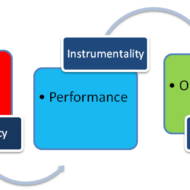
How to create an effective and Sustainable Model for Training and Development? The term “change” is synonymous with competitiveness in modern world and thus corporate firms are in a position to evolve unique, sustainable and strategic training model for employees that will facilitate the following: On one hand the training process motivates the suitable employees to perform well and makes them perceive their role properly in order to accomplish the enterprise objectives. On the other hand the organisation keeps itself abreast by constantly updating and understanding the training needs through Assessment of the external environment and Expectations of the employees in terms of rewards whether intrinsic or extrinsic. Porter and Lawler Model: The Expectancy Motivation Model of Porter and Lawler serves as an inspiration for effective training. The stress is on The value placed on performance outcome by the individual. The degree to which the individual believes that his efforts will lead to attainment of these rewards. Psychological aspect of this model: Almost all individuals are motivated by money ( by the way, Who doesn’t want money!). But money alone does not serve the purpose of motivation. Job satisfaction is a relative term in that different people find different things or elements motivating them in their work environment leading to job satisfaction. It might be Challenge Good inter personal relationship Pay Perks Culture Excellent leader Pressure Stress and the like… Assessment of training need: The training needs must be assessed by the respective organisations considering the following aspects: To transform the individual from the capacity of learner to executor Instil in him confidence to do the job well Relate his job to rewards so that he will try to excel Give your employees scope for career advancement Incorporate technical and technological innovations as part of your training process Physical, emotional and social elements in the internal as well as the external environment must be taken into consideration while training the workforce. Physical– relates to the physical fitness needed to perform the technical skills Psychological– relates to keeping the morale of the employees high at all points and maintaining an amiable work atmosphere Social– relates to the friendly relationship that should exist between the trainer and the trainees and among the trainees. Usefulness of the model: This model lends its support to the training and development process through three steps or stages. Diagnosis stage- Need analysis Formulation stage- Programme planning Evaluation Diagnosis stage: The interplay of ability and role perception Training brings out EFFICIENT as well as DEFICIENT performers. That is one good thing and also making the employee understand the role he is about to play as part of the organisation. Training through learning is one aspect which imparts knowledge and training is considered to be effective if one’s behaviour is modified as per the expectations and demands of the job. Role perception can be misunderstood by some individuals when they might try to exercise undue authority or overlook their duties and responsibilities. Confinement of authority Superior-Subordinate appraisal procedures Clear HR policy formulations are needed to avoid confusion and chaos in role playing. Formulation stage: The effected change through learning is expected to be retained by the employees throughout the career span in the organisation followed by constant grooming. The stress is on the value of the activity to be learnt Giving feedback on the progress of employees towards final training objectives Relate the learning activity to increasing, meaningful materials already studied outside the training programme. Evaluation stage: Training evaluation is particularly necessary when the organisation wants to encourage the competitive spirit amongst the trainers and evaluation is considered as a challenge by itself. If the training provided eliminates obstacles...

Posted by Managementguru in Change management, Human Resource, Principles of Management, Project Management, TQM, Training & Development
on Mar 22nd, 2014 | 0 comments
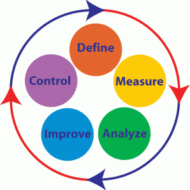
Zero defect achievement – Striving towards perfection! What is TQM: Quality management is all about being proactive and concepts like total quality management and six sigma of recent origin reiterate the fact that hundred percent error free performance is possible the first time and every time. This is what is called as zero defect achievement which most of the companies at corporate level are headed for. The intention is to strive for perfection in work, the way an archer aims for the bull’s eye on a target. It is time for people to cast off their conservative and archaic business practices and think out of the box to enjoy a sustainable competitive advantage driven by quality. Zero defects seek top performance standards the first time and every time. Management scholars offer several suggestions to improve the zero defects programme: The idea of zero defects programme has to be communicated through out the organization right from the top to the bottom level including managers, supervisors and workers. This would harmonize the functions of line and staff. Prerequisites needed for the programme have to be determined and made available. The culture and climate of the firm should be conducive to accomplish the programme. Explain in simple terms about the functions to be accomplished. Design some solid system of recognition. Set up a time schedule as time lines are very important when it comes to product delivery. Spot all the bottlenecks and remove them. Training is absolutely essential– the skill set and mind set of the employees have to be attuned to the goals of the venture. Mock training and rehearsals are helpful. Standardization is the key to the success of this programme. Bench Marking: Total quality management is a process contributing towards quality and bench marking is a means to achieve high quality performance by setting some top notch industry performers as reference points or standards. It is a continuous systematic process employed by a business enterprise to develop business and working processes that integrate the best practices available in the industry. Bench marking is a crucial element in the process of quality management. Quality is one field of production, which reflects the ethical viewpoint and approach of business firms towards the society and other investors or stakeholders. Bench marking is a modus operandi used to: Identify and define customer requirements Plan and establish effective goals and objectives Develop time measures of productivity Become more competitive Determine industry’s best practice The initial step is to decide what is to be bench marked-the product, services, customers or business processes in various departments. The second phase of action is to identify and select your competitors who will set the necessary precedence. With that as reference, decide on your company’s strategies by making meaningful and valid comparisons. Judge the competitor strengths and weaknesses and compare them with that of your own to get a clear picture of your current performance levels and capabilities. This will give you a clear indication on the action plans to be developed and implemented in a phased manner by your organization. Quality management is likely to happen only when all the employees of the organization work as a team with unified principles. Quality demands deep commitment and responsibility from the members of organizations. It calls for intense training to imprint the perception of quality in the minds of...

Posted by Managementguru in Business Management, Human Resource, Organisational behaviour, Principles of Management, Training & Development
on Mar 22nd, 2014 | 0 comments
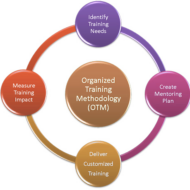
Crucial Aspects of a Successful Training Plan Training should be aimed at improving the individual’s skill set as well mind set to gain knowledge about the work environment he will be exposed to, as well as to exhibit the right kind of attitude and behavior towards his peers and superiors. What is the need to train people? It is like molding raw clay into the desired shape and structure to suit our needs. An untrained individual, how well qualified he may be cannot fill the bill. Pros and Cons of Training: Corporate training methods include cognitive as well as behavioral type of training. But the crux of the whole thing is that the trainer must keep in mind the trainee’s present skill set or background and to train him in areas where he lacks verve. Also the pros and cons of each and every method should be analysed before training is imparted. Cognitive training is to theoretically teach trainees the concept of work and how to go about it. This is equally important as learning induces changes in behavior of individuals. Virtual Reality Training: Virtual reality training method is gaining momentum in areas of medicine, engineering and aeronautics where the trainee is exposed to situations artificially recreated for the purpose of simulation. Introduction to QuickBooks 2017 The trainee is benefited by the near perfect exposure he gets through these types of training methods. Simulations in the field of medicine are a real boon to students doing their internship and also to the surgeons performing complicated surgeries. On the job training: On the job training makes the trainees incorporate conceptual learning to be put into effective use. The experience adds value to their career and it is a good way to grow. The trainee also has to understand the significance of being trained that gives him an edge over others. Business games are popular in corporate setup where the members of a team are asked to don different roles or positions of the firm and solve a particular problem situation. This develops sound reasoning skills and instills confidence to handle crisis situations. Concept of training: The very concept of training is to make the individual tailor made for the job he is about to perform; not only the physical aspects but also psychological and social aspects have to be included in the package that will etch a comprehensive pattern in the process of management development techniques. Training improves the effectiveness and efficiency of performance, oriented towards goal setting, develops inter personal relationship and helps in the exercise of knowledge building providing room for improvement. Soft skill training: Soft skill training is a must as communication is the most important aspect that binds any organization for the purpose of delegation, clarification and development. Trainers have to be suitably trained and the common objective for both trainers and trainees would be to satisfy the objectives of the organization and work towards it. Evaluation of training gives you an idea whether your training design has been successful and the implementation satisfactory. Employee Feedback: Feedback from the employees and the ratio of performance standard achieved against the established standards sets the benchmark for the next mile of achievement to be covered. Blogging and Podcasting for Beginners Workshops, seminars, lectures, discussions aid not only the trainees but also the employers of the company to periodically refresh themselves with the ongoing changes and developments in the industry. The bottom line is, training has to bring in not only transitions but also transformations in individuals in terms of improved personality, attitude, behavior and adaptability to better their future...

Posted by Managementguru in Human Resource, Principles of Management, Project Management, Training & Development
on Mar 22nd, 2014 | 0 comments
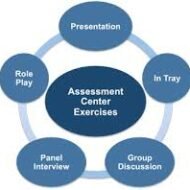
Off-The-Job Training In basket Exercise Recently, the in-basket has become a focus of interest because of its handiness in selection across a wide variety of jobs. A range of techniques have been used to develop in-baskets. In a traditional in-basket exercise, candidates are given time to review the material and initiate in writing whatever actions they believe to be most appropriate in relation to each in-basket item. When time is called for the exercise, the inbasket materials and any notes, letters, memos, or other correspondence written by the candidate are collected for review by one or more evaluators. Often the candidates are then interviewed to ensure that the evaluators understand actions taken by the candidate and the rationale for the actions. If an interview is not possible, it is also quite common to have the candidate complete a summary sheet (i.e., a questionnaire). Lecture A lecture is the method learners often most commonly associate with college and secondary education. Yet, it is also considered one of the least effective methods to use for adult learners. In this method, one person (the trainer) does all of the talking. He or she may use handouts, visual aids, question/answer, or posters to support the lecture. Communication is primarily one-way: from the instructor to the learner. Movies/videos/computer-based training Content for the training experience comes primarily from a videotape or computer-based program. Simulations Trainees participate in a reality-based, interactive activity where they imitate actions required on the job. It is a useful technique for skills development. Simulations are widely used now-a-days in medical field where surgeons find it very useful to train their hands on a virtual human body for complicated surgeries. Self-discovery Trainees discover the competencies on their own using such techniques as guided exercises, books, and research. Role Playing During a role-play, the trainees assume roles and act out situations connected to the learning concepts. It is good for customer service and sales training. Case Studies A case study is a description of a real or imagined situation which contains information that trainees can use to analyze what has occurred and why. The trainees recommend solutions based on the content provided. Seminar Seminars often combine several group methods: lectures, discussions, conferences, and demonstrations. Conference The conference training method is a good problem-solving approach. A group considers a specific problem or issue and they work to reach consensus on statements or solutions. When choosing from among these methods, the trainer must decide which one best suits the trainees, the environment, and the investments available. Many trainers will choose to combine methods or vary them. Others will select a single method that works best for them and never vary. With so many options, a trainer is limited only by his or her...










